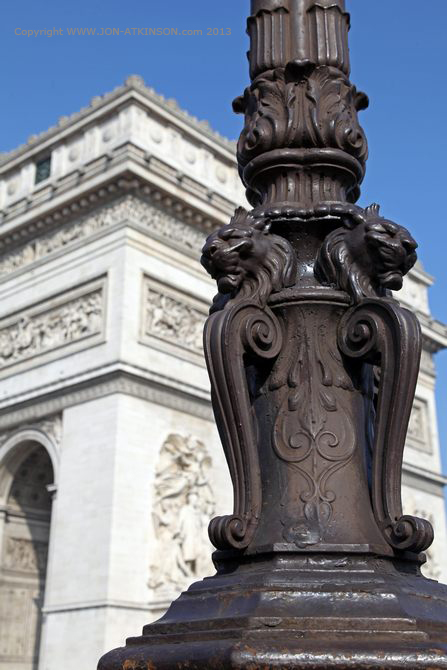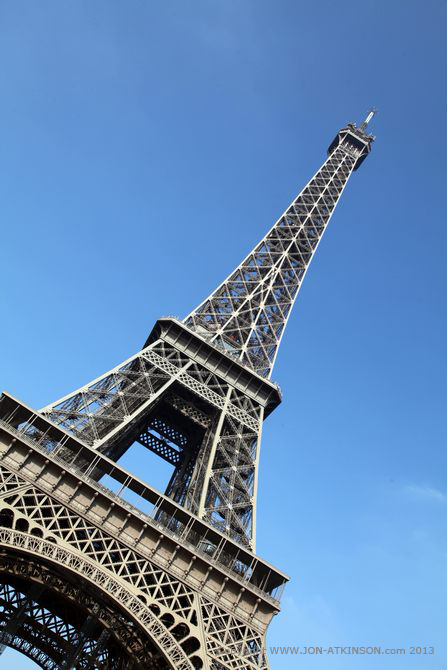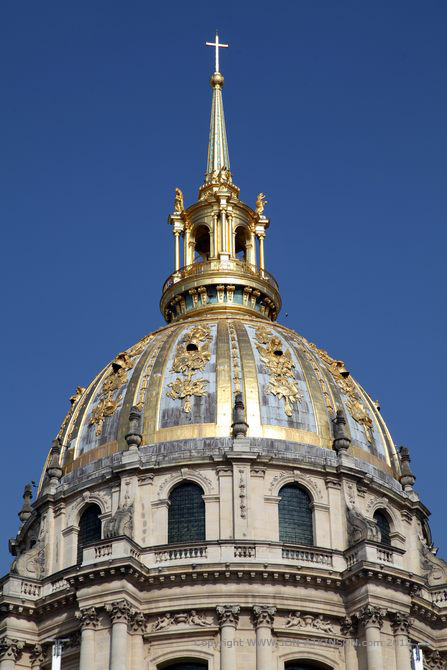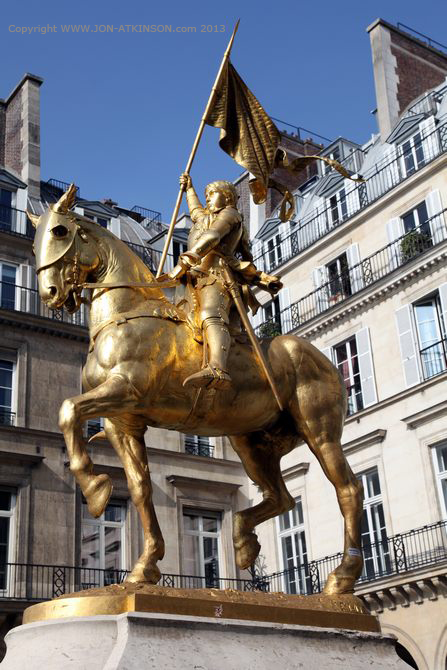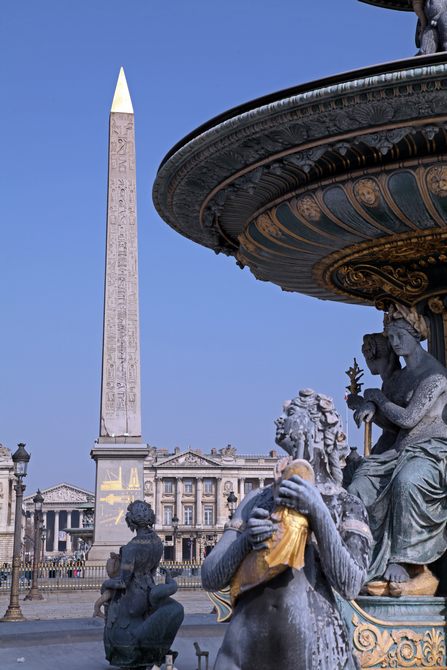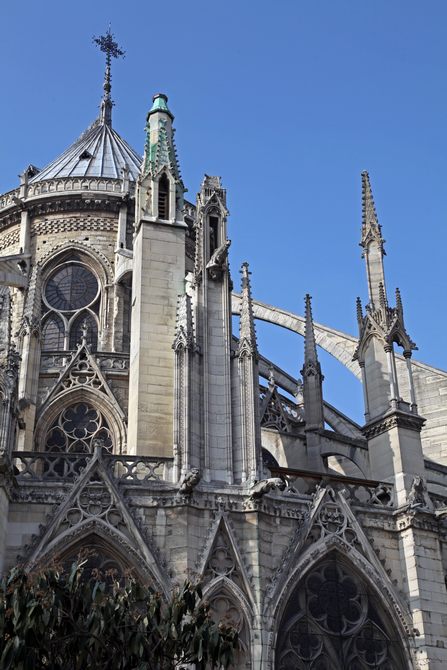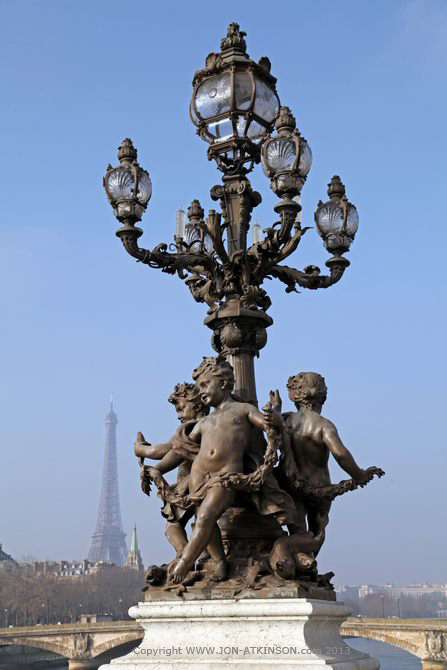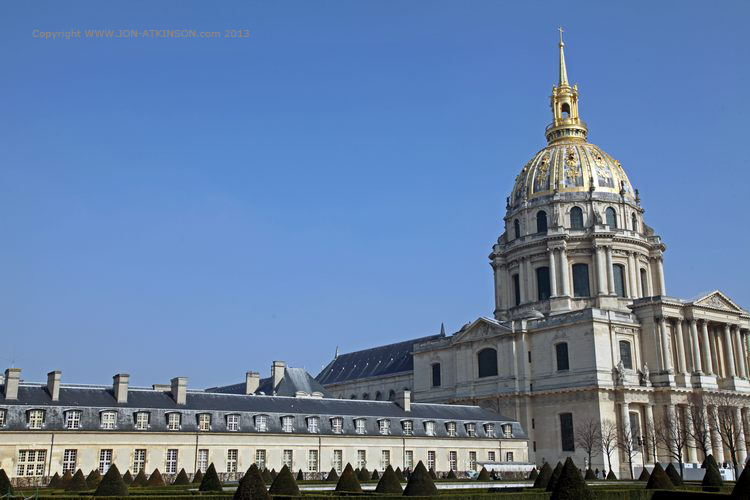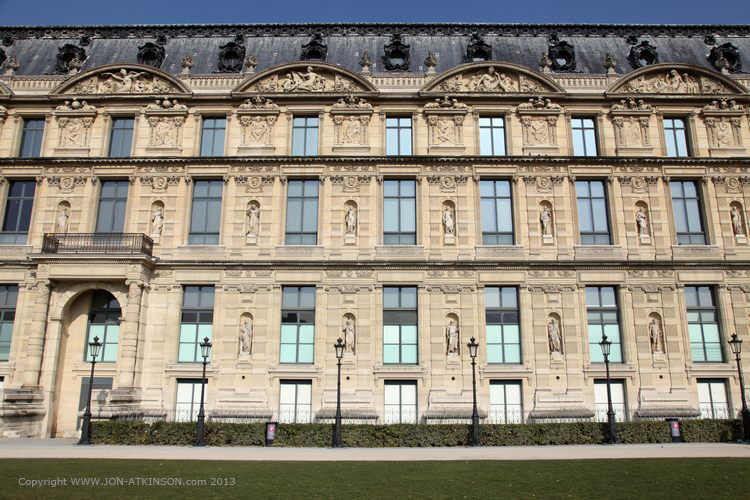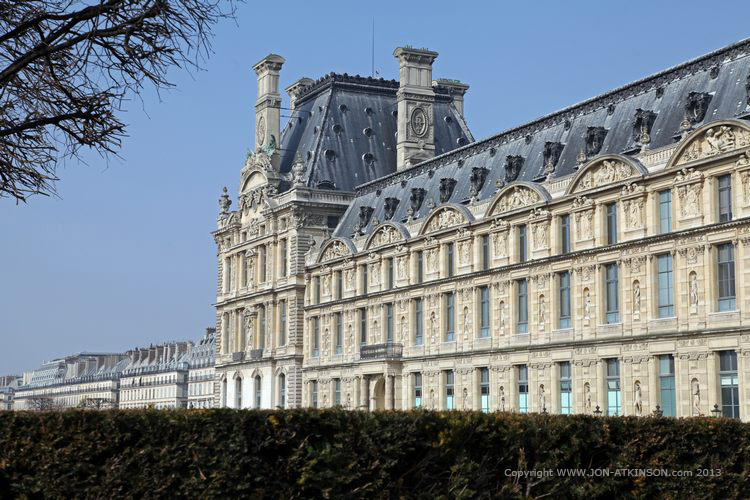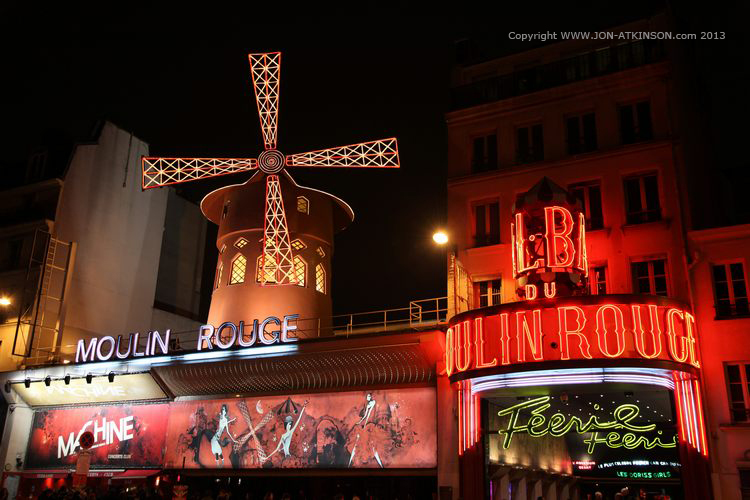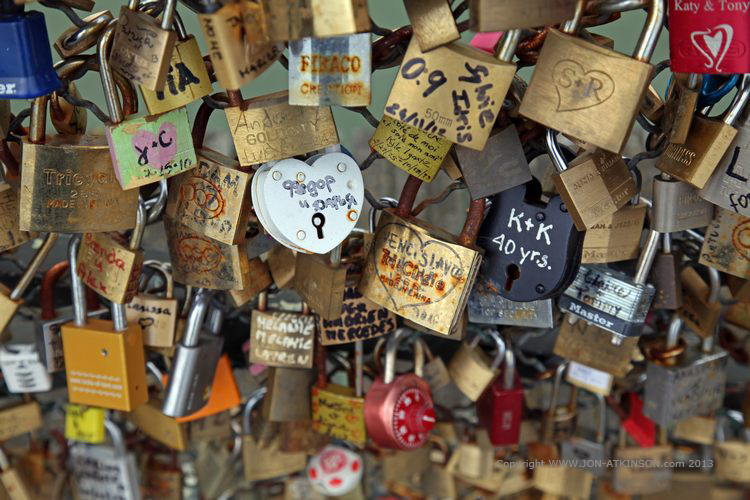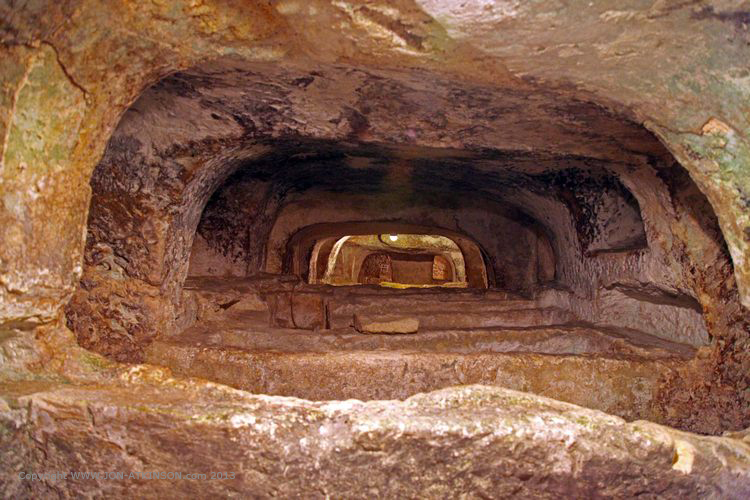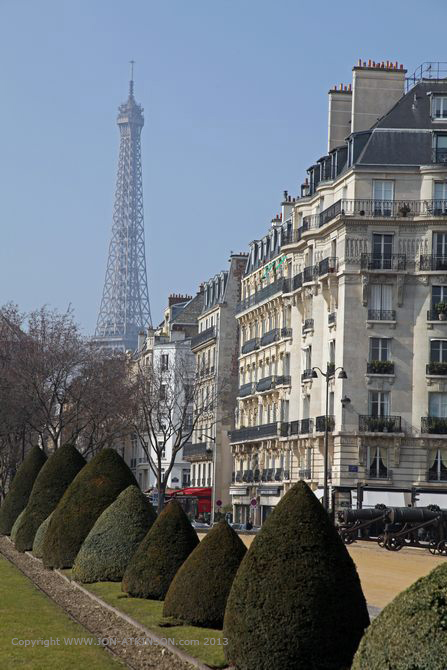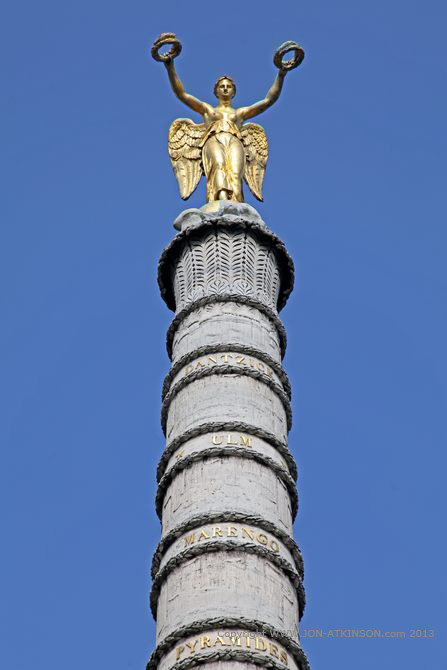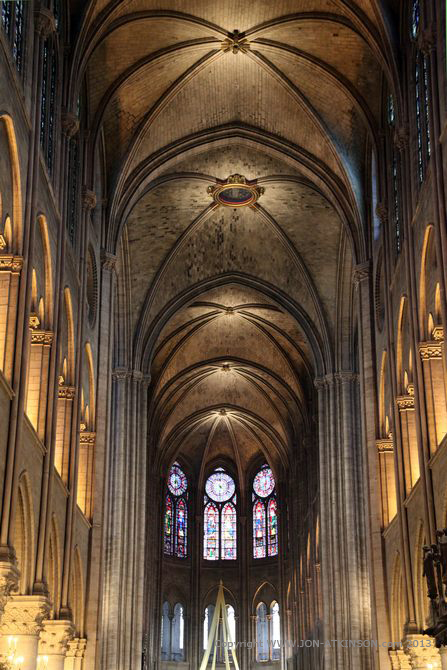Paris1 - Arc De Triomphe, Paris: The Arc de Triomphe de l'Étoile is one of the most famous monuments in Paris. It stands in the centre of the Place Charles de Gaulle (originally named Place de l'Étoile), at the western end of the Champs-Élysées. The Arc de Triomphe honours those who fought and died for France in the French Revolutionary and the Napoleonic Wars. |
Paris2 - Louvre, Paris: The Louvre Palace is a former royal palace located on the Right Bank of the Seine in Paris, between the Tuileries Gardens and the church of Saint-Germain l'Auxerrois. Its origins date back to the medieval period, and its present structure has been buit in stages since the 16th century. |
Paris3 - Eiffel Tower, Paris: The Eiffel Tower was built by Gustave Eiffel for the 1889 Exposition Universelle, which was to celebrate the 100th year anniversary of the French Revolution. Its construction in 2 years, 2 months and 5 days was a demonstration of France's technological prowess, at the end of the 19th Century. |
Paris4 - Les Invalides, Paris: the Hôtel des Invalides was founded by Louis XIV to shelter 7,000 aged or crippled formed soldiers. The enormous range of buildings was completed in five years (1671-76). The gold-plated dome (six kilograms of gold leaf were involved) that rises above the hospital buildings belonged to the Church of Saint-Louis (1675-1706) and was designed by Jules Hardouin-Mansart. |
Paris5 - Joan of Arc Statue, Paris: The, french, "Jeanne d'Arc", statue is an equestrian sculpture by Emmanuel Frémiet. It is located at the Place des Pyramides, in Paris, near where Joan of Arc was wounded during her failed attempt to take Paris. The original statue was commissioned by Napoleon III, in 1874 but it was reworked by the sculptor in 1899. |
Paris6 - Place de la Concorde, Paris: The octagonal, 20 acre, Place de la Concorde is the largest square in Paris. It is situated between the Tuileries and the Champs-Elysées. In 1763, a large statue of king Louis XV was erected at the site to celebrate the recovery of the king after a serious illness. The square surrounding the statue was created later, in 1772, by the architect Jacques-Ange Gabriel. |
Paris7- Arc De Triomphe, Paris: The names of all French victories and generals inscribed on its inner and outer surfaces of the Atc De Triomphe. Beneath its vault lies the Tomb of the Unknown Soldier from World War I. The monument was designed by Jean Chalgrin in 1806, and its iconographic program pitted heroically nude French youths against bearded Germanic warriors in chain mail. |
Paris8 - Notre Dame, Paris: The Notre Dame Cathedral Paris was among the first buildings in the world to use the flying buttress. The building was not originally designed to include the flying buttresses around the choir and nave. After the construction began and the thinner walls grew ever higher, stress fractures began to occur as the walls pushed outward. In response, the cathedral's architects built supports around the outside walls, and later additions continued the pattern.
|
Paris9 - Pont Alexandre III, Paris: Built in only two years by the engineers Résal and Alby, the first stone was placed by Tsar Nicholas II, although the structure was opened at the 1900 Universal Exhibition. Amongst the decoration are four 17 metre high corner pillars, bearing the four gilded bronze equestrian groups which represent Pegasus held by Fame. |
Paris10 - Les Invalides, Paris: The chapel of the Invalides contains Napoleon's tomb. In 1840, during the 'Return of the Ashes', a law passed on 10th June ordered the construction of the Emperor's tomb below the dome of the Invalides. The coffin was transferred to the chapel on 2nd April, 1861, in Napoleon III's presence and set up in a red porphyry sarcophagus in the middle of a circular uncovered crypt. |
Paris11 - Louvre, Paris: The Palais du Louvre was originally constructed as a fortress, built in the 12th century by king Philip II Augustus along with the City's first enclosure wall to defend the banks of the Seine river against invaders from the north. The fortress had at its centre a cylindrical tower: the Donjon, or the Keep. |
Paris12 - Louvre, Paris: The Bourbons took control of France in 1589. During his reign, Henry IV began his "Grand Design" to remove remnants of the medieval fortress, to increase the Cour Carrée's area, and to create a link between the Palais des Tuileries and the Louvre. The link was completed via the Grande Galerie by architects Jacques Androuet de Cerceau and Louis Métezeau. |
Paris13 - Moulin Rouge, Paris: The Moulin Rouge, co-founded in 1889 by Charles Zidler and Joseph Oller, is best known as the birthplace of the modern form of the can-can dance. Originally introduced as a seductive dance, the can-can dance revue evolved into a form of entertainment of its own and led to the introduction of cabarets across Europe. |
Paris14 - Locks on the Pont des Arts, Paris: Between 1802 and 1804, under the reign of Napoleon I, a nine-arch metallic bridge for pedestrians. In recent years, many tourist couples have taken to attaching padlocks with their first names written or engraved on it to the railing or the grate on the side of the bridge, then throwing the key into the Seine river below, as a romantic gesture |
Paris15 - Catacombs, Paris: The Catacombes de Paris is an underground ossuary in Paris located south of the former city gate the ossuary holds the remains of about six million people and fills a renovated section of caverns and tunnels that are the remains of Paris's stone mines. |
Paris16 - Eiffel Tower, Paris View: The Eiffel Tower rises 300 meters (984 feet) and when it was completed at the end of the 19th century it was twice as high as the Washington Monument, at the time the tallest structure in the world. Each one of the about 12,000 iron pieces were designed for the Eiffel Tower individually to give them exactly the shape needed. |
Paris17 - Place du Châtelet, Paris: The Place du Châtelet is a public square in Paris, on the right bank of the river Seine. At the square's center is Fontaine du Palmier, designed in 1806 by architect and engineer François-Jean Bralle to celebrate French victories in battle. It has a circular basin, six metres in diameter, from which a column rises in the form of a palm tree's trunk 18 metres tall. The palm trunk is surmounted by a gilded figure of the goddess, Victory, holding a laurel wreath in each hand. |
Paris18 - Notre Dame, Paris: The Notre Dame Cathedral Paris or Notre Dame de Paris ('Our Lady of Paris' in French) is a Gothic cathedral on the eastern half of the Île de la Cité in the fourth arrondissement of Paris, France, with its main entrance to the west. |

